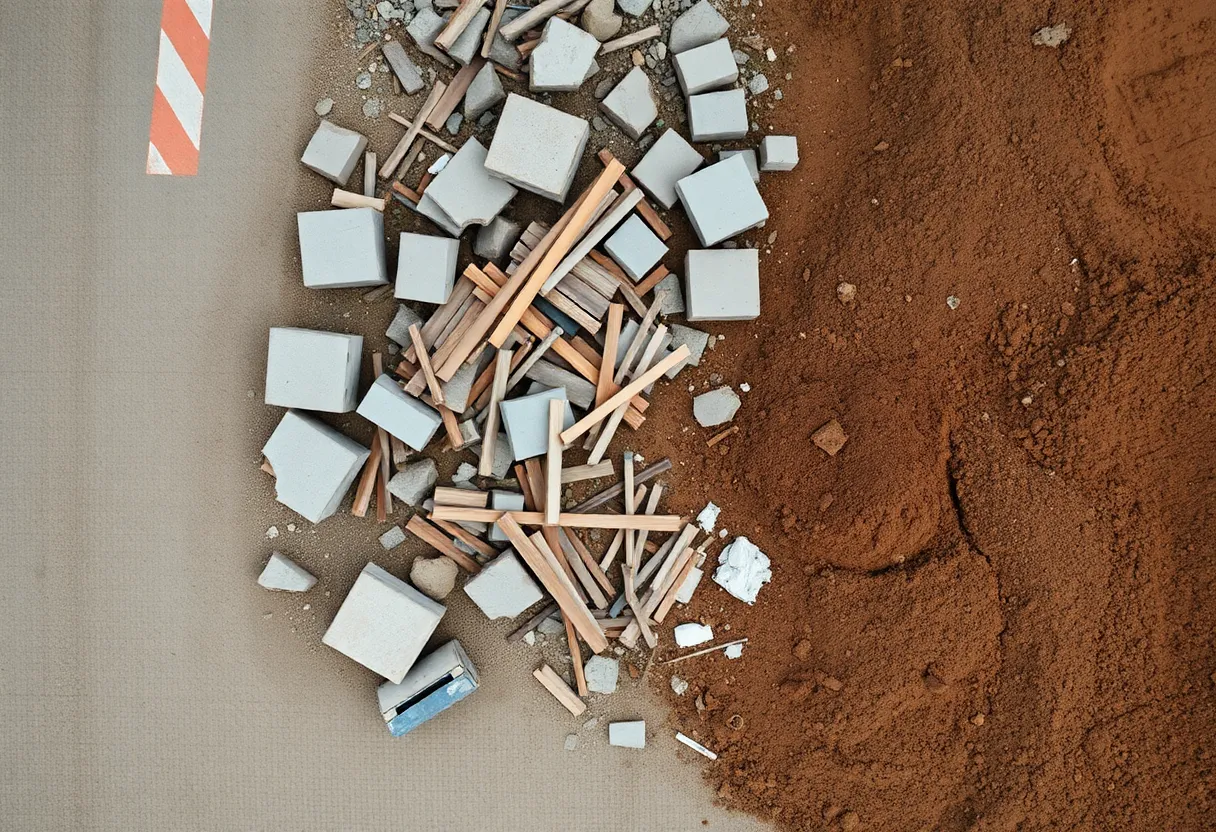Australia, September 25, 2025
News Summary
Australia’s construction sector has been identified as the largest contributor to waste in the country, generating an alarming 29% of total waste. Reports show significant resource loss, with key materials like concrete and timber leading to costly environmental impacts. Recommendations for tackling this crisis include enhancing accountability, fostering a circular economy approach, and embedding sustainability in national policies. Without action, projections indicate a loss of AU$64 million in construction materials over the next five years. Public opposition and ongoing research highlight the need for effective waste management solutions.
Australia’s Construction Industry Waste: Insights from Recent Reports
Australia’s construction industry stands as the largest source of waste in the nation, contributing to 29% of the total waste generated. Recent findings reveal alarming statistics regarding construction waste management practices and highlight opportunities for improvement.
Waste Generation and Costs
The AWO Report indicates that an average building project discards about 141 kg of material per square metre, which translates to a staggering AU$384 per square metre in wasted materials. Major categories of wasted materials encompass Mixed Concrete, Masonry and Tile, Soil, Sand and Rubble Fines, and Timber.
Recommendations for Reducing Waste
To combat this issue, the AWO Report recommends driving accountability and circularity in construction practices. A pivotal aspect of waste management lies in crucial design decisions, which significantly affect waste outputs. The report suggests establishing clear objectives pertaining to design, construction, operation, and end-of-life stages.
On-Site Management and Policy Integration
Implementation of best practices includes effective on-site material management as well as setting obligations to report against material benchmarks. Furthermore, the report advocates for the integration of circular targets into national policies and building regulations. State governments are encouraged to introduce financial incentives and dedicated grants that promote sustainability in the construction sector.
Future Projections and Economic Opportunities
Without reform, Australia risks wasting AU$64 million in construction materials over the next five years. However, the opportunity for a low-carbon liquid fuel industry is on the horizon, as indicated in Deloitte’s Refined Ambitions Report. Australia stands to gain a potential AU$36 billion market opportunity by 2050, primarily through low-carbon liquid fuels (LCLFs) such as sustainable aviation fuel and renewable diesel.
Continued Demand for Liquid Fuels
As a major user of liquid fuels across 11 economic sectors, Australia will still require 30 billion litres of liquid fuels, predominantly for mining, aviation, and freight by 2050. In tandem, the Treasury is working on guidance for climate-related transition planning, with a consultation period set for August 15 to September 24, 2025. This aims to assist organizations in addressing climate risks while enhancing resilience within financial markets.
Environmental Considerations and Regulatory Aspects
The Australian Government aims to release this guidance by the end of 2025 as part of the Sustainable Finance Roadmap. Additionally, the Productivity Roundtable has initiated discussions on proposals to reform the Environmental Protection and Biodiversity Conservation Act 1999 (EPBC) to streamline approvals and establish national environmental standards.
The potential backlash against proposed projects has emerged, with public opposition noted for a waste facility in Gunnedah, NSW, despite the intention to process construction waste effectively.
Current Waste Statistics and Research Efforts
Data from 2018-2019 reveals that Australia generated 27 million tonnes of waste from construction and demolition, marking a 61% increase since 2006-07, with 76% of this waste being recycled. However, the retail waste management sector faces significant challenges, including public unwillingness, also known as Not-in-My-Back-Yard attitudes, and issues regarding resource recovery systems.
Research endeavors at RMIT University are currently underway to enhance construction waste management, focusing on developing recycling infrastructure and promoting circular economy principles. Strategies like extended producer responsibility are suggested to improve recycling practices and sustainability in the construction industry.
FAQ Section
What percentage of Australia’s total waste comes from the construction industry?
The construction industry contributes to 29% of Australia’s total waste.
How much material is wasted on average per building project in Australia?
On average, a building project discards 141 kg of material per square metre.
What is the projected waste cost for construction materials in Australia over the next five years?
Australia is projected to waste AU$64 million in construction materials over the next five years.
How much liquid fuel will Australia require by 2050?
Australia will require 30 billion litres predominantly in mining, aviation, and freight by 2050.
Deeper Dive: News & Info About This Topic
Additional Resources
- JD Supra: August 2025 ESG Policy Update – Australia
- Wikipedia: Circular Economy
- The Conversation: Australia Needs Construction Waste Recycling Plants
- Google Search: Construction Waste Recycling Australia
- ScienceDirect: Article on Construction Waste
- Google Scholar: Construction Waste Management Australia
- ScienceDirect: Article on Environmental Management
- Encyclopedia Britannica: Environmental Sustainability
- The Conversation: Construction Industry Waste
Author: Construction CA News
The CALIFORNIA STAFF WRITER represents the experienced team at constructioncanews.com, your go-to source for actionable local news and information in California and beyond. Specializing in "news you can use," we cover essential topics like product reviews for personal and business needs, local business directories, politics, real estate trends, neighborhood insights, and state news affecting the area—with deep expertise drawn from years of dedicated reporting and strong community input, including local press releases and business updates. We deliver top reporting on high-value events such as the Rose Parade, Coachella, Comic-Con, and the California State Fair. Our coverage extends to key organizations like the California Building Industry Association and Associated General Contractors of California, plus leading businesses in technology and entertainment that power the local economy such as Apple and Alphabet. As part of the broader network, including constructionnynews.com, constructiontxnews.com, and constructionflnews.com, we provide comprehensive, credible insights into the dynamic landscape across multiple states.




